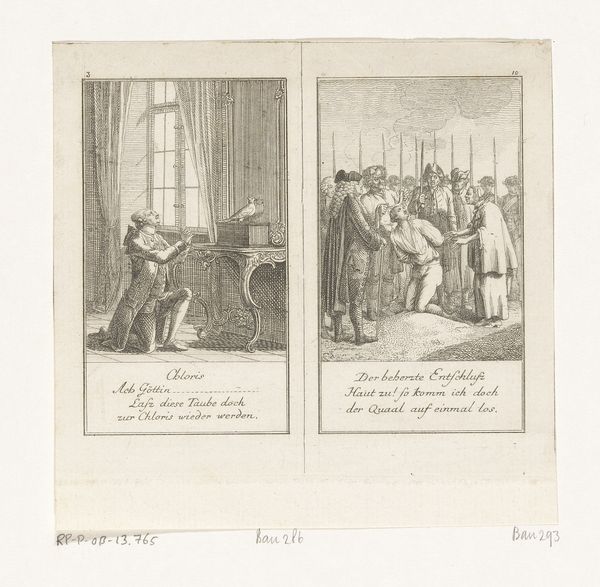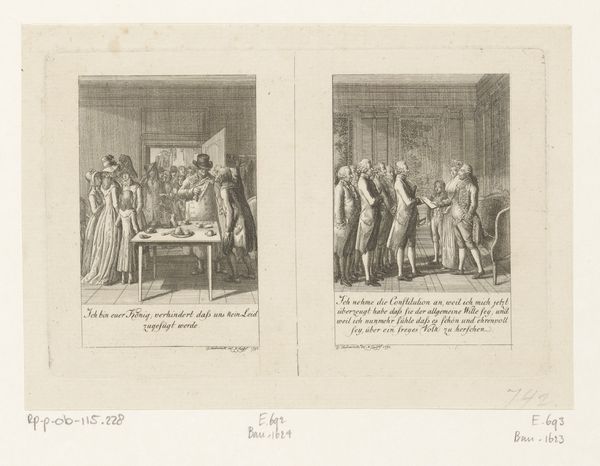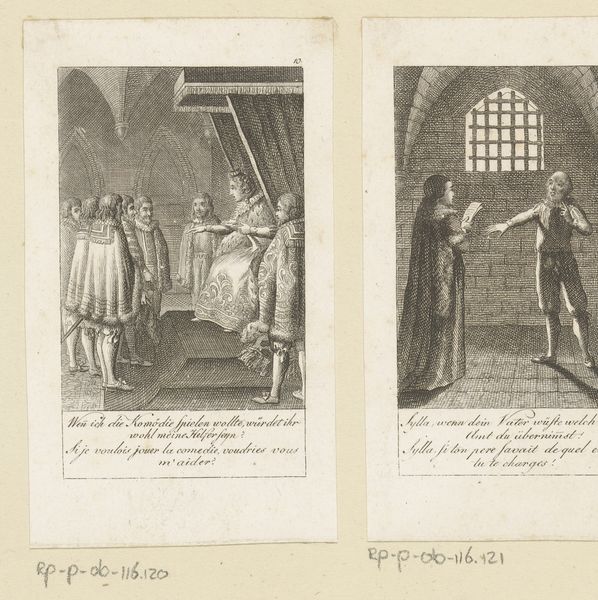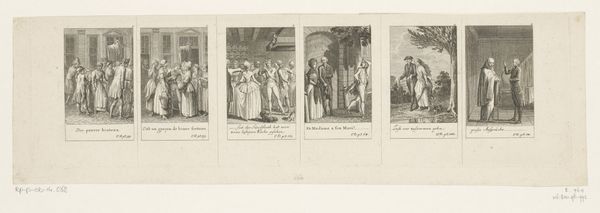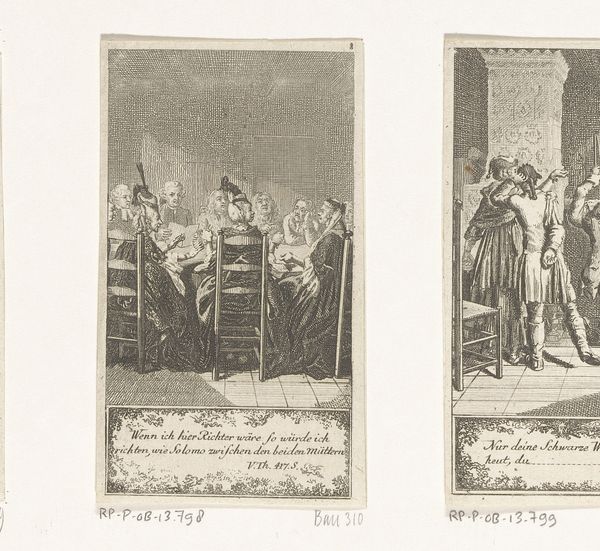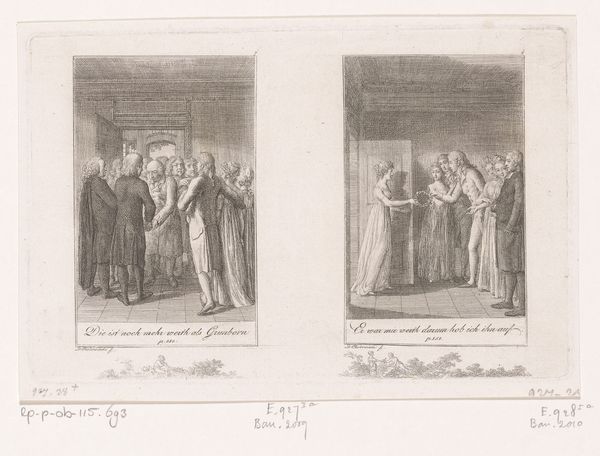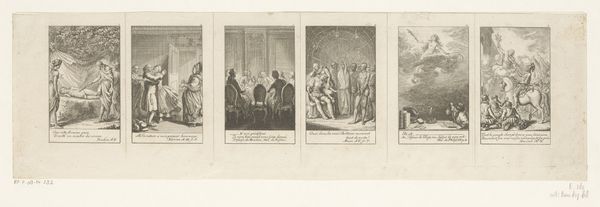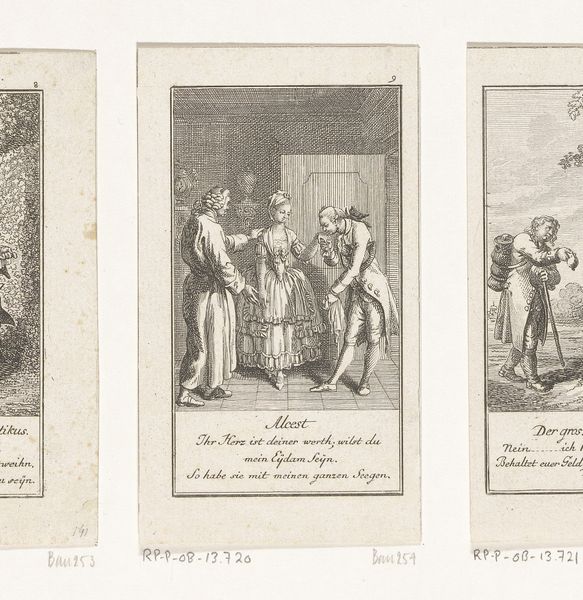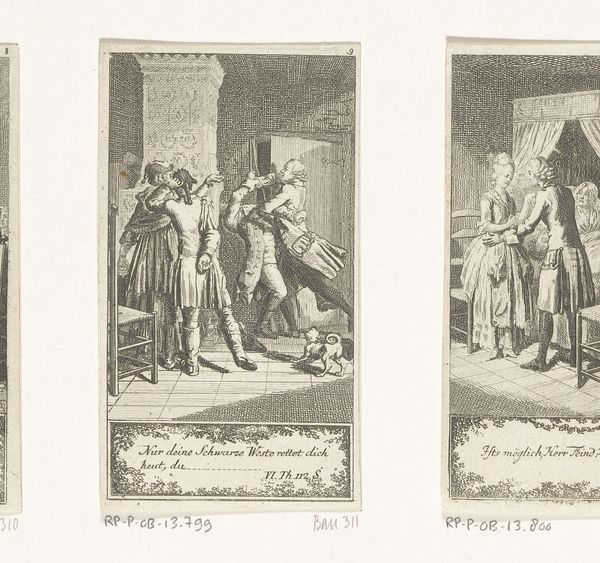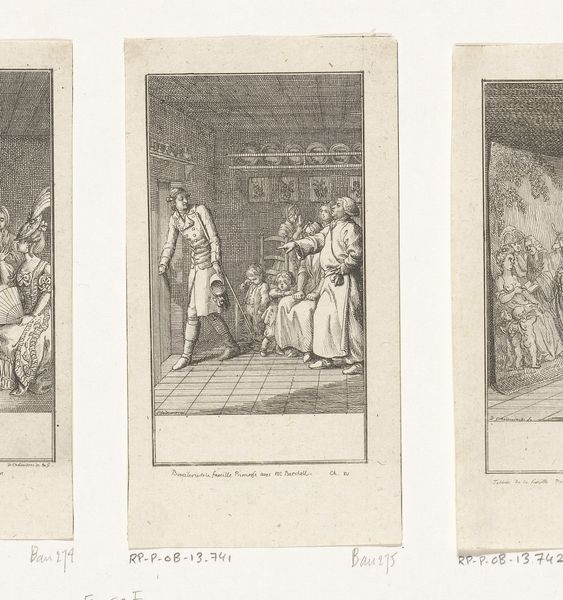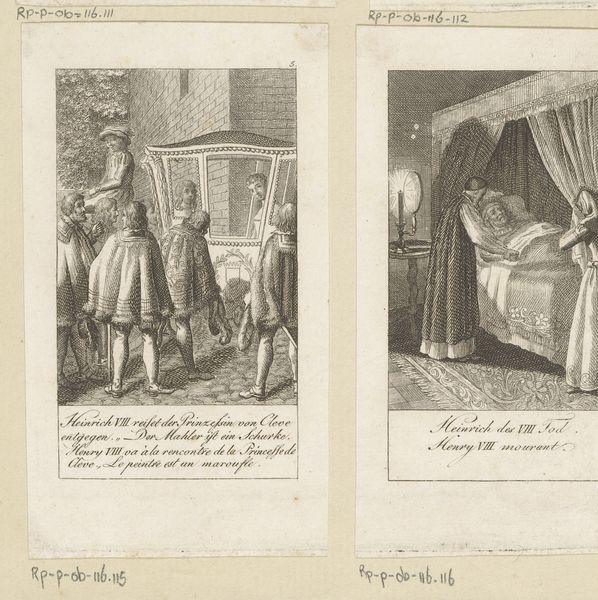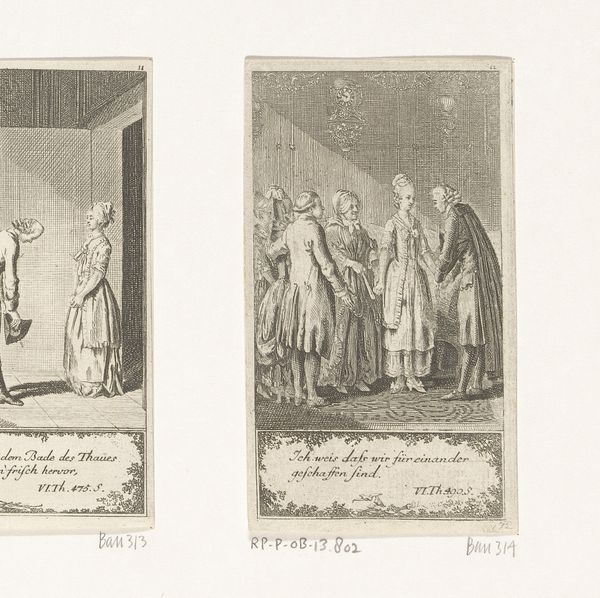
Frederika van Pruisen en Frederik van York treden in het huwelijk 1792
0:00
0:00
print, engraving
#
narrative-art
# print
#
old engraving style
#
figuration
#
romanticism
#
genre-painting
#
history-painting
#
engraving
Dimensions: height 113 mm, width 81 mm
Copyright: Rijks Museum: Open Domain
Curator: Editor: This is "Frederika van Pruisen en Frederik van York treden in het huwelijk," created by Daniel Nikolaus Chodowiecki in 1792. It's an engraving. I am immediately struck by its detail; it’s almost photographic. What do you see in this piece? Curator: Well, as a materialist, I find the print medium particularly fascinating. Engravings like this weren't just art objects, but vital tools of mass communication in the late 18th century. They disseminated images and ideas, contributing to a wider cultural dialogue. Think about the labour involved in creating those tiny lines and the sophisticated social network necessary for distributing the finished product. How did these prints circulate, and who had access to them? Editor: That's a great point; it connects the artistry to its distribution and the consumption practices of the era. Were these widely available, then? Curator: Certainly more available than paintings were, but access was still dictated by social strata. Consider the paper quality, the printing press technology, and even the cost of acquisition - all tangible elements that determined who could possess and interpret these images. Also, let's observe what are these figures carrying? Torches! They create light, a symbol of Enlightenment but also fuel consumption. Consider their environmental cost as well, linking luxury to the exploitation of natural resources. Editor: That gives me a lot to think about. It shifts the focus from the event depicted, the wedding, to the processes and context surrounding its representation. It really shows how art production ties in to much bigger societal themes. Curator: Exactly! We shift away from mere aesthetics toward production, consumption, and societal power. Editor: Thanks, it completely reframes how I look at it now! Curator: Indeed. Materiality gives another way to interpret artwork.
Comments
No comments
Be the first to comment and join the conversation on the ultimate creative platform.
